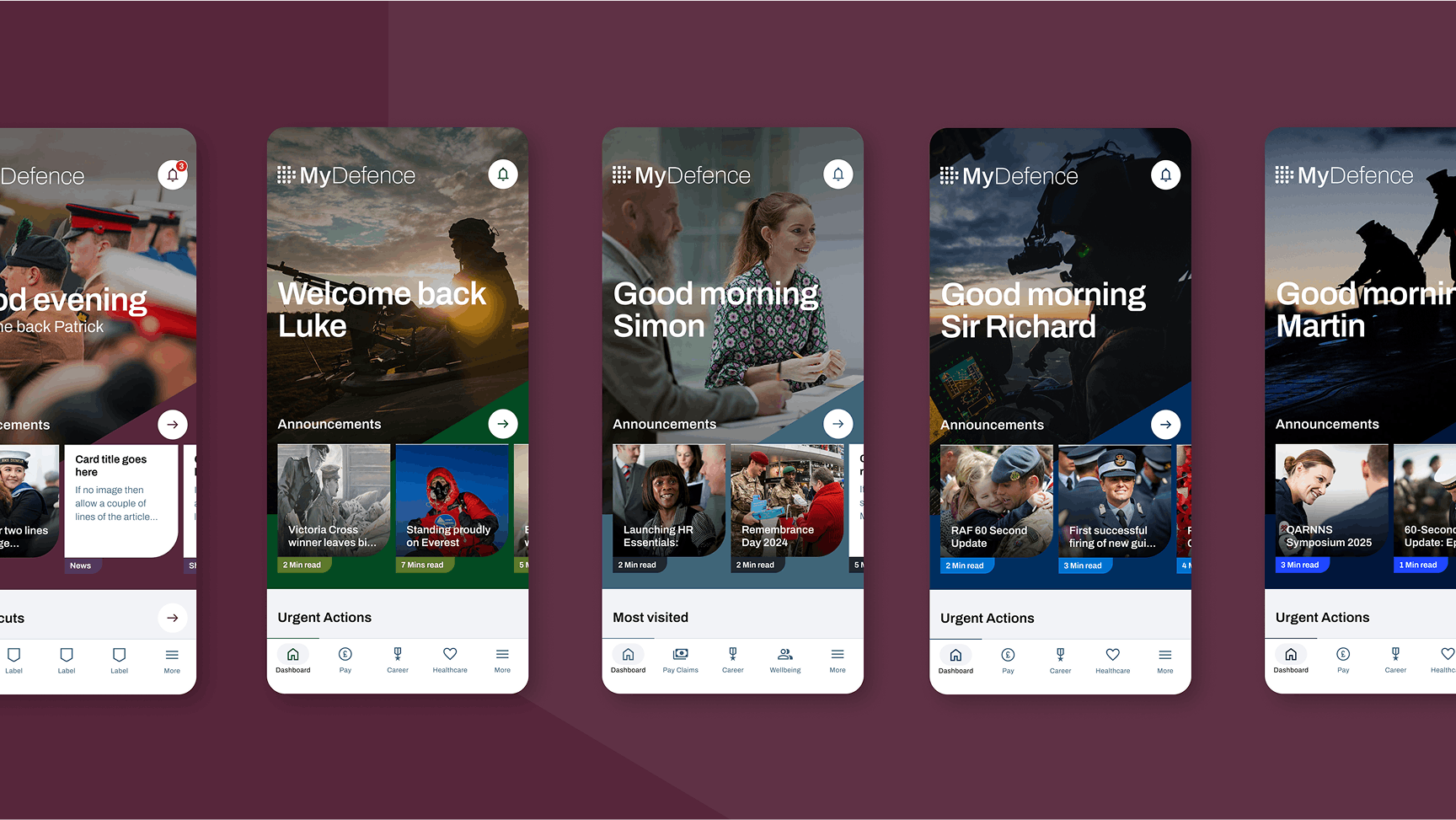MyDefence
A people first digital strategy for the Ministry of Defence

The Ministry of Defence (MoD) is one of the UK’s most complex institutions. It serves the British Army, Royal Navy, Royal Air Force and Civil Service, supporting more than 180,000 people across a vast range of roles, locations and responsibilities. It’s an organisation united in purpose but divided by structure - with each service operating under its own systems and ways of working.
Despite a shared mission of maintaining a secure and prosperous United Kingdom, many people across the MoD felt underserved by the tools and systems designed to support them. These issues were brought into sharp relief by the publication of the Haythornthwaite Review in 2023, which outlined the extent to which being underserved was affecting retention within the military.
Digital experiences were fragmented and inconsistent. Administrative burdens were high. And for many, the path to career growth felt unclear. These weren’t isolated frustrations — they were systemic signs that the way in which the MoD’s digital services were serving its people was no longer fit for purpose. The MoD’s people live in a world shaped by digital innovation, but their on-duty digital experiences were falling far short of their high expectations.
In 2022, we transformed the digital employee experience for the Royal Navy, with our award-winning employee empowerment tool, MyNavy. Next up, the Ministry of Defence as a whole.

Our strategists were brought in to help make sense of the complexity, uncover the root problems, and define a clear way forward. We began by immersing ourselves in the organisation, working through a network of classified materials to understand not just what the MoD offered digitally, but where the gaps lay across the three services. But documents alone would never tell the full story.
We took our research into the field, speaking directly to HR teams, Chief Technical Officers, people leaders, communications teams and front-line personnel from across all services - from engineers to infantry. We listened carefully to the pain points and the patterns, gathering insight from those closest to the challenges. This human-centred approach helped us see the organisation not just in terms of its structure, but as a network of real people, each with their own expectations, frustrations and unmet needs.
From there, we shaped a digital strategy grounded in agile practices. Think big, start small, scale fast. We worked iteratively, unlocking insight through data analysis and prototyping, always checking back with users to ensure we were building something meaningful - something that would actually help. Our approach balanced long-term strategic thinking with short-term, practical action. This wasn’t theory. It was transformation, built from the ground up.
The result was MyDefence – a holistic product strategy that would transform how the MoD interacts and serves its people. We worked to not just define the vision, but experience principles, creative direction and early prototyping that would deliver services. Our mission? To unlock people power, serve their needs and unleash the full capability of an incredible workforce, globally.
The product will bring together the needs of the Army, Navy and RAF in one platform, cutting through organisational silos to deliver personalised, seamless support for everyone it serves. It was built not just to meet today’s needs, but to evolve - creating a foundation for continuous improvement, cultural alignment and digital growth.
MyDefence will make it easier for people to do their jobs, to manage their careers, and to feel more connected to the organisation they serve. And crucially, it will unlock digital progress across the MoD’s complex eco-system of digital products and services. It’ll speed up delivery of new digital tools whilst ensuring consistency. Designed to reduce friction, support wellbeing, and improve satisfaction. And by streamlining processes and removing duplication, it also delivers real operational efficiency.
Its proof that even in one of the most complex public institutions in the country, user-centred strategy and agile methods can unlock real change - and deliver real transformative value.